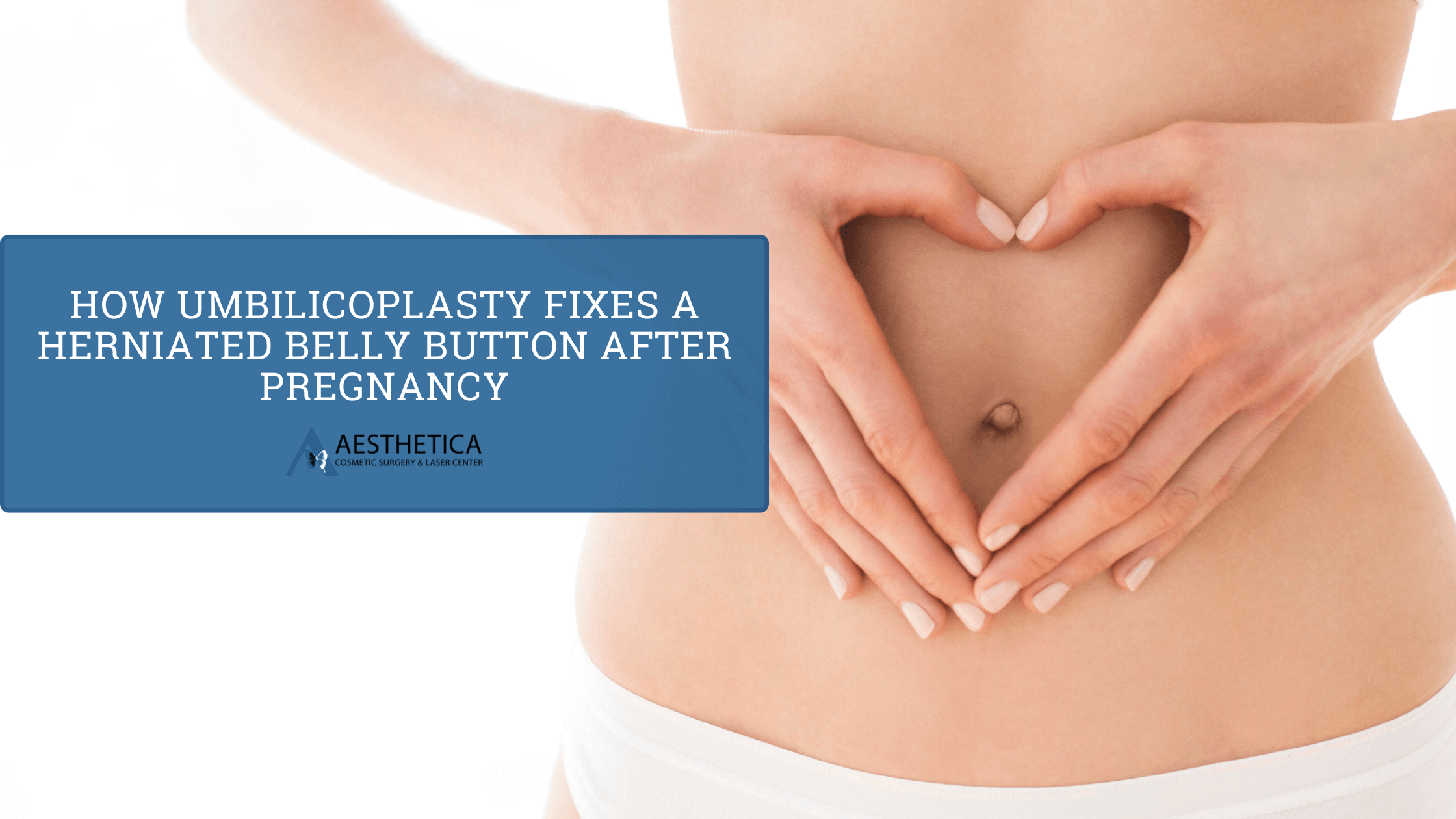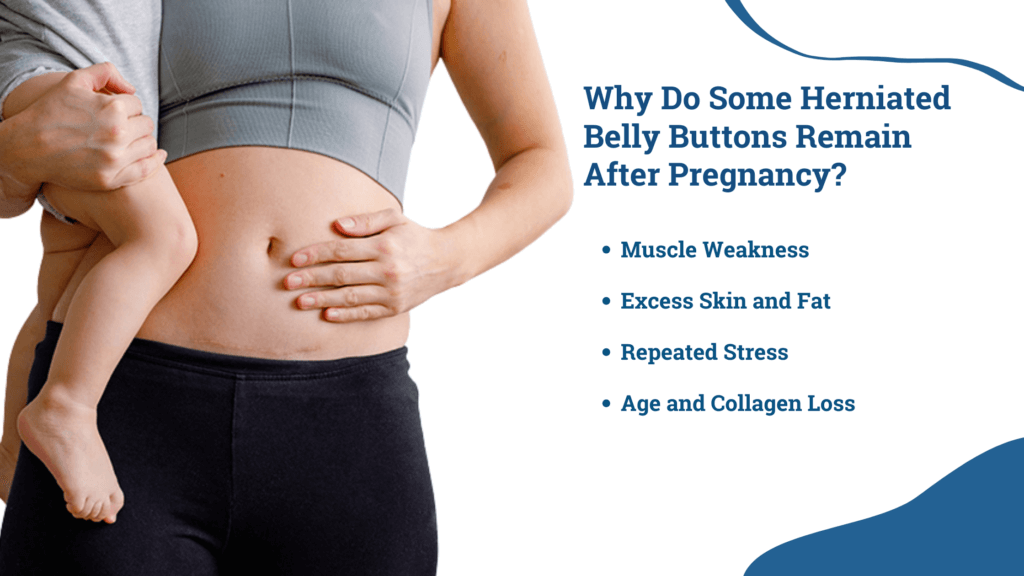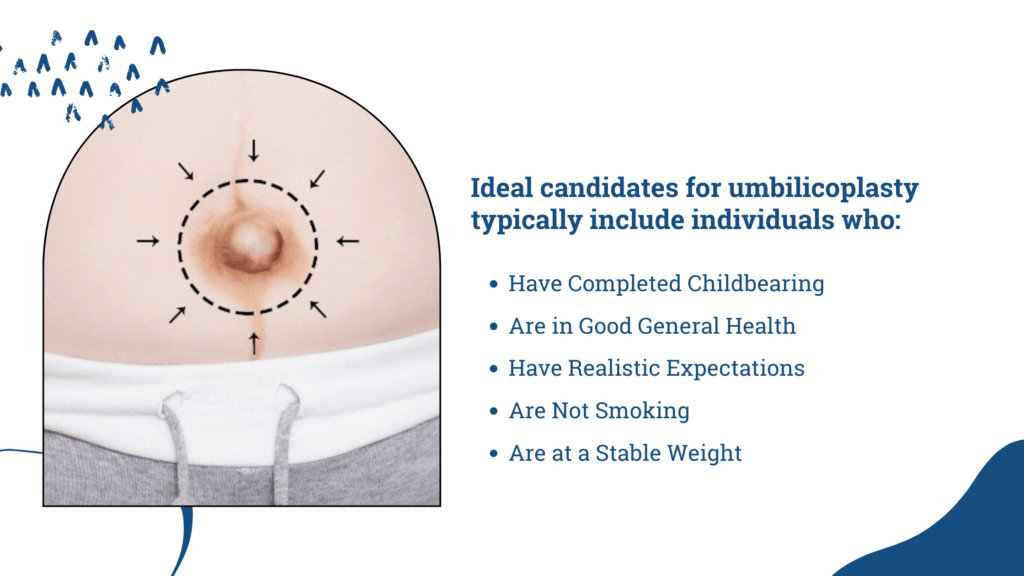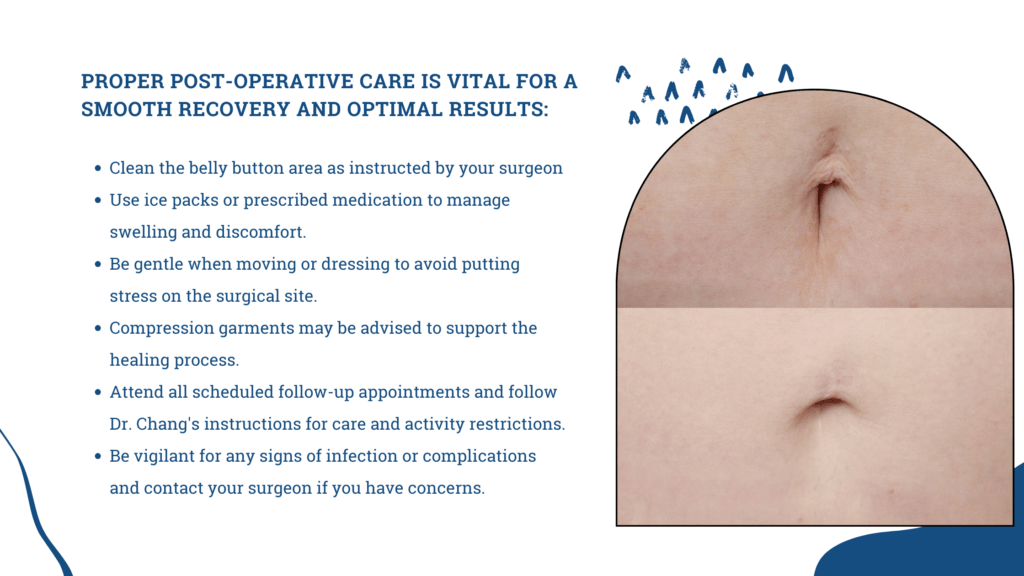How Umbilicoplasty Fixes a Herniated Belly Button after Pregnancy8 min read

Aesthetica Editorial Team

Welcoming a new life into the world is an extraordinary journey!
However, it does present a few challenges; some mothers experience physical changes that linger after childbirth, such as herniated belly buttons.
It’s a common, yet rarely discussed, post-pregnancy concern that can affect both your physical comfort and confidence – you’re not alone, and there is a solution.
We’ll discuss what umbilicoplasty is, how it can beautifully fix a herniated belly button after pregnancy, and why this might just be the step you need to feel more like yourself again.
What Causes a Herniated Belly Button during Pregnancy?
During pregnancy, your body undergoes remarkable changes to accommodate the life growing inside you. One such change can involve the belly button.
Usually, the belly button is an indentation on your abdomen, marking where the umbilical cord was attached. But why does it sometimes become herniated during pregnancy?
It’s all due to the increased pressure inside your abdomen. As your baby grows, this pressure pushes against your abdominal wall. In some cases, the pressure can cause the umbilical area to bulge outward, leading to what’s known as an umbilical hernia.
This hernia is a small gap in the abdominal muscles through which some internal tissue protrudes, creating a noticeable bulge.
Hormonal changes also play a role. Pregnancy hormones, like relaxin, soften your body’s connective tissues to prepare for childbirth. This softening can weaken the abdominal muscles, making them more prone to herniation.
Typically, this condition is more common in women who have had multiple pregnancies, are carrying multiple babies, or have a history of umbilical hernias.
It’s important to remember that this is your body’s natural response to the unique demands of pregnancy and nothing to be alarmed about in most cases.
Why Do Some Herniated Belly Buttons Remain after Pregnancy?

Normally, after giving birth, the pressure in the abdomen reduces, and the herniated belly button might retract back to its original position.
For some women, the herniated belly button remains long after the postpartum period. But why does this happen?
Muscle Weakness
The muscles around the belly button, particularly the rectus abdominis muscles, may have been stretched and weakened during pregnancy. If these muscles don’t regain their strength post-pregnancy, they might be unable to hold the tissue back in place.
Excess Skin and Fat
Post-pregnancy, you might have excess skin or fat around the abdomen, which can prevent the belly button from returning to its original state. This is particularly true if there has been significant weight gain during pregnancy.
Repeated Stress
If you’ve had multiple pregnancies, the repeated stretching and weakening of abdominal muscles can make it more likely for the herniated belly button to become a permanent feature.
Aging and Collagen Loss
As we age, we lose collagen and elasticity in our skin. This natural process can contribute to the persistence of a herniated belly button post-pregnancy, as the skin and muscles may not snap back as they once could.
What Is Umbilicoplasty?
Umbilicoplasty is a surgical procedure aimed at reshaping or repairing the belly button, often sought after by individuals who have experienced changes due to pregnancy, weight fluctuations, or previous surgeries. But what exactly does it involve?
Umbilicoplasty aims to restore the belly button to a more natural and aesthetically pleasing shape. It’s not just about looks; for many, it’s also about regaining a sense of normalcy and comfort in their skin.
The procedure is typically done under local anesthesia and can vary in complexity depending on the individual’s specific condition and desired outcome.
What Are the Steps Involved in an Umbilicoplasty?
The process of umbilicoplasty can be broken down into several key steps:
Before the surgery, you’ll have a consultation with Dr. Chang. Here, you’ll discuss your goals, Dr. Chang will evaluate your condition, and a customized plan will be developed.
On the day of the surgery, the area around your belly button will be cleaned and prepared. Local anesthesia is usually administered to numb the area and ensure you’re comfortable throughout the procedure.
Dr. Chang makes small incisions around the belly button. The exact pattern of the incision depends on the specific changes needed.
Dr. Chang then reshapes the belly button, which may involve removing excess skin, tightening loose skin, or altering the position of the belly button. In cases of herniation, the protruding tissue is typically pushed back into place, and the muscle wall is repaired.
Once the reshaping is complete, the incisions are closed with sutures. Depending on the type used, these may be dissolvable or need to be removed after a few days.
After the surgery, there will be a recovery period. You’ll receive instructions on how to care for the surgical area, what activities to avoid, and signs to watch for regarding healing or complications.
The entire process, from preparation to completion, usually takes one to two hours. It’s important to have realistic expectations and understand that healing takes time. The final results are typically visible once the swelling subsides and the area fully recovers.
How Can Umbilicoplasty Help after Pregnancy?
Pregnancy is a time of significant change for your body, and for many women, these changes include alterations to the appearance of their belly button.
Post-pregnancy, a herniated or stretched belly button can be a source of discomfort or self-consciousness. Umbilicoplasty, post-pregnancy, can help in several ways.
The procedure can significantly improve the appearance of the belly button, making it look more “normal” or akin to its pre-pregnancy state. This change can have a positive impact on your self-image and confidence.
If the belly button is herniated, umbilicoplasty can repair the hernia, reducing any associated discomfort and preventing potential complications like tissue strangulation.
For bellies with loose or sagging skin around the navel area, this procedure can help tighten and smooth out the area, contributing to a more toned abdominal appearance.
Beyond aesthetics, a reshaped belly button can mean greater comfort in clothing and fewer skin irritations or infections, which can sometimes occur in cases of severe herniation.
Are You a Good Candidate for Umbilicoplasty?

Ideal candidates for umbilicoplasty typically include women who:
Have Completed Childbearing
It’s recommended to undergo umbilicoplasty once you’ve decided not to have more children, as future pregnancies can reverse the effects of the surgery.
Are in Good General Health
Being in good health reduces the risks associated with surgery and anesthesia.
Have Realistic Expectations
Understanding what umbilicoplasty can and cannot achieve is crucial for post-surgery satisfaction.
Do Not Smoke
Smoking can impair healing and increase the risk of complications during and after surgery.
Are at a Stable Weight
Significant weight fluctuations after the procedure can affect the results.
How Long Does Recovery from Umbilicoplasty Take?
The recovery time from umbilicoplasty can vary depending on the extent of the surgery and your body’s healing capabilities.
The first few days post-surgery, you might experience discomfort and swelling. Pain medication can be prescribed to manage any discomfort.
Most patients can return to work and light activities within a week. Strenuous activities and heavy lifting should be avoided for several weeks.
Full recovery, where swelling fully subsides and scars begin to fade, can take several months. The final results are usually visible after this period.
Follow-up appointments will be necessary to monitor your healing process and address concerns.
How to Care for Your Belly Button after Umbilicoplasty

Proper post-operative care is vital for a smooth recovery and optimal results:
- Clean the belly button area as instructed by your surgeon to prevent infection.
- Use ice packs or prescribed medication to manage swelling and discomfort.
- Be gentle when moving or dressing to avoid putting stress on the surgical site.
- Compression garments may be advised to support the healing process.
- Attend all scheduled follow-up appointments and follow Dr. Chang’s instructions for care and activity restrictions.
- Be vigilant for any signs of infection or complications, and contact your surgeon with concerns.
Remember, every individual’s recovery journey is unique.
Explore Your Umbilicoplasty Options in Northern Virginia Today!
Meet us at 19500 Sandridge Way, Suite 350, Leesburg, VA 20176, or call us at (703) 574-4342 for a complimentary consultation with Board-Certified Plastic Surgeon Dr. Phillip Chang before proceeding with your procedure. If everything matches up, our team will help you navigate the entire process from beginning to end. Also, remember to check out our blog and social media for more information on cosmetic surgery trends!
Let Us Help You!
Our office can provide you with helpful information, schedule a free consultation, and walk you through the many services and procedures we provide.
Contact Dr. Chang's Office:
More Articles For You

The Latest Techniques in Double Chin Removal in Leesburg, VA
In the charming town of Leesburg, VA, where looking good and feeling great are top

The Art of Refining the Side Profile of a Woman through Plastic Surgery
In the realm of cosmetic enhancements, the side profile of a woman holds a pivotal

Enhance Now, Pay Later: Plastic Surgery Payment Plans in Leesburg, VA
In the picturesque town of Leesburg, VA, pursuing beauty and self-improvement is a journey many

Areola Reduction for Men in Loudoun County
In the heart of Loudoun County, where the beauty of nature meets bustling urban life,
